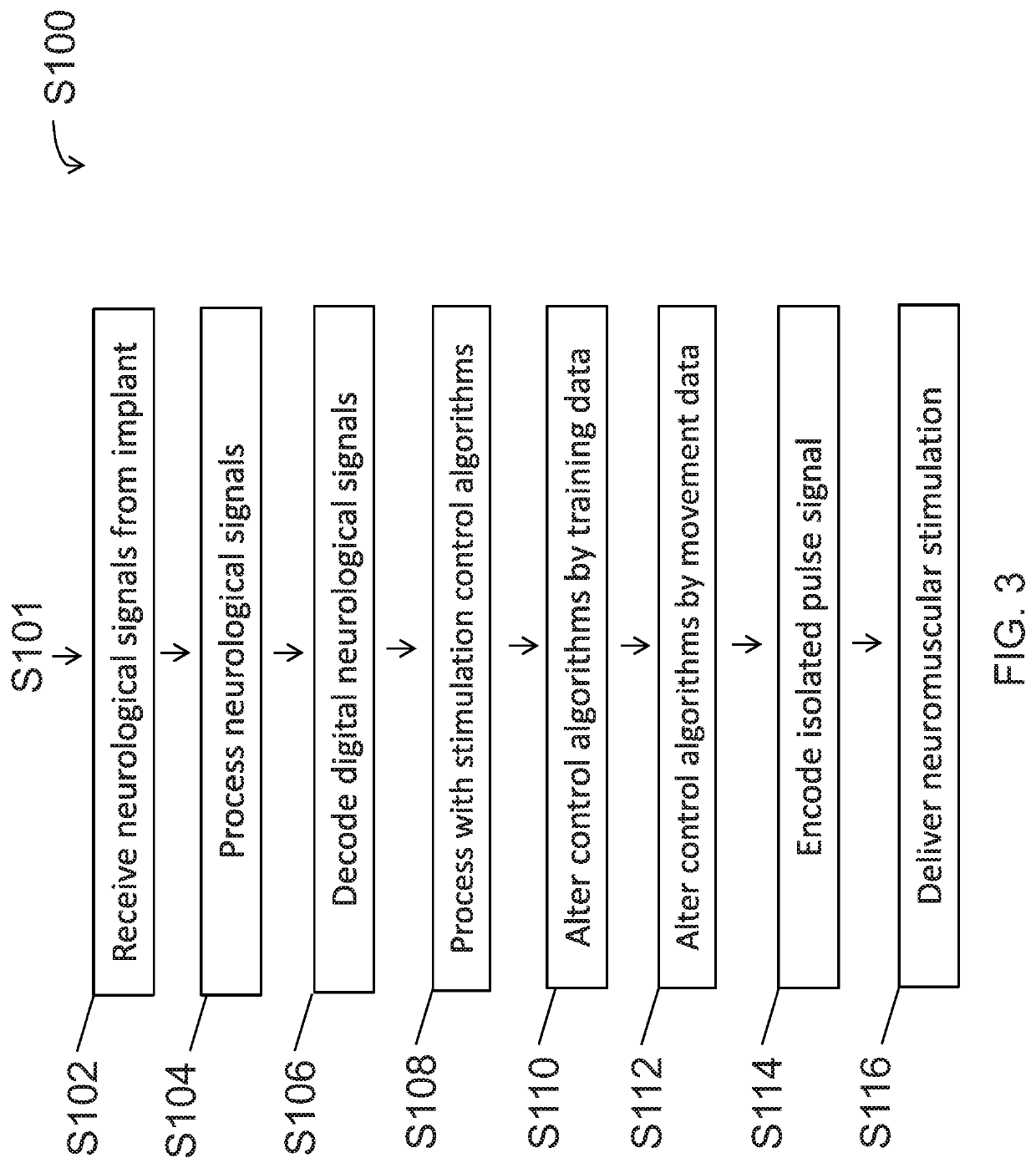Neural sleeve for neuromuscular stimulation, sensing and recording
a neuromuscular and neuromuscular technology, applied in the field of neuromuscular stimulation systems, methods and devices, can solve the problems of not allowing selective stimulation of small muscles segments for fine wrist and finger control, many limitations of current transcutaneous neuromuscular stimulation electrodes (or patches), etc., and achieves enhanced electrical contact and increased electrode positioning choices.
- Summary
- Abstract
- Description
- Claims
- Application Information
AI Technical Summary
Benefits of technology
Problems solved by technology
Method used
Image
Examples
examples
[0139]FIGS. 30A-41B are pictures taken from a set of experiments where an able-bodied user's left hand was wrapped with a neuromuscular electrical stimulation sleeve. The user was asked to move his hand into different positions. In each set, one picture shows an image of the hand / arm motion that the user performed with his limb, and the other picture shows a graphical hand representation of the user's limb position based on position sensor data collected from the sleeve. In each set of pictures, the actual limb moved is shown as the left hand, and the graphical limb moved was the right hand. This was due to the setup of the system. As seen here, the correspondence between the measured position shown by the graphical limb and the actual limb movement corresponded very well.
[0140]FIGS. 42A-42C are bar graphs showing the different percentages of curvature for each digit during finger extension, finger fair curvature, and making a fist. As seen in FIG. 42A, the digits were generally str...
PUM
 Login to View More
Login to View More Abstract
Description
Claims
Application Information
 Login to View More
Login to View More - R&D
- Intellectual Property
- Life Sciences
- Materials
- Tech Scout
- Unparalleled Data Quality
- Higher Quality Content
- 60% Fewer Hallucinations
Browse by: Latest US Patents, China's latest patents, Technical Efficacy Thesaurus, Application Domain, Technology Topic, Popular Technical Reports.
© 2025 PatSnap. All rights reserved.Legal|Privacy policy|Modern Slavery Act Transparency Statement|Sitemap|About US| Contact US: help@patsnap.com



